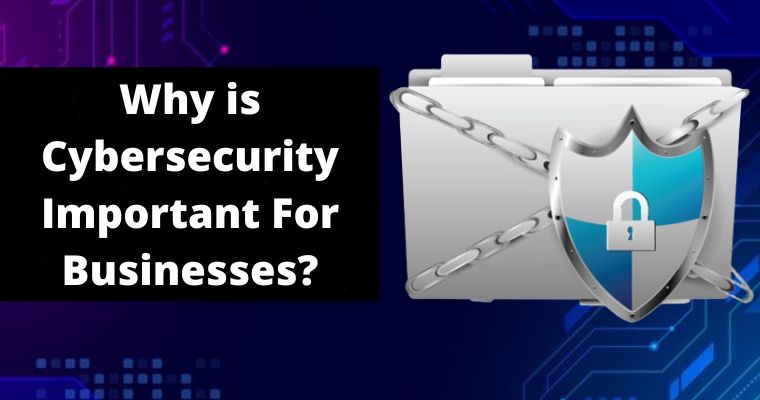Metaverse is derived from two words; meta and verse, which means beyond and the universe, respectively.
The word Meta is derived from a Greek word, whereas verse is derived from the universe. Other Synonyms for this word are Multiverse/Megaverse/Parallel Universe/Parallel World/Virtual Reality/Virtuality.
In layman’s language, the Metaverse is a virtual world where people can interact with each other and create virtual things. It is a platform that allows users to create, share and learn about anything they want.
In the virtual world, people are able to find new things to do, learn new skills and even get paid for doing so. This means that there is a growing need for cybersecurity experts in this digital world as security risk increases exponentially.
But it is also true that the Metaverse has given rise to entirely new technological and social phenomena, particularly in the areas of information security and anonymity. This creates a growing problem for security agencies all over the world.
The volume of information that will be hacked from users of this newly developed multiverse is staggering, and the financial implications are even more so.
Now let’s discuss the technologies that it uses because most of the risks associated with metaverse are because of the technologies that it is based upon.
Table of Contents
Technologies that Metaverse Uses
Virtual reality
To use this technology, users have to wear heavy headsets (as of now).
Augmented reality
It means that some artificial elements are mixed with our real world. Everything won’t be virtual reality.
5G technology
It is used to upload and download a huge amount of data.
Blockchain
If users want to buy anything in the metaverse, cryptocurrencies will be used, and to keep the transaction safe, blockchain technology is used.
What are the Cybersecurity Risks in The Metaverse?
It promises a new virtual experience that people will have while playing the games and doing many more things.
It relies on virtual and augmented reality, digital devices, and social platforms, which means that it will have an impact on cybersecurity because it relies on technology.
Its main dependence is on VR headsets, so there is a crucial need to secure these devices over mobile phones.
Data privacy
Safeguarding the hardware is an ultimate requirement for the metaverse but with this, securing data and privacy is also essential because these are woven into every part of the technology.
When it comes to metaverse security, securing data and analyzing the huge amount of transactions is crucial. Metaverse is anticipated to provide a unique experience so that the core things will remain the same.
It is designed in such a way that allows users to have near-perfect duplicates of their identity, which is totally opposite of the experience that we have today.
Darker Motives
The experience that users will have is still more of a concept than reality. However, experts are still concerned about the possibility of cyber-attackers and other people with malicious intent using it for illegal things.
Till now, no technology has been designed in a way that only has the potential for good. Every technology has the potential for both good and bad so is the metaverse.
People might see it as fertile ground for recruiting illegal organizations.
In recent times, technology has become a primary source of recruiting people in all forms of illegal forms. The metaverse will make it more simple for those people to meet.
The worst part of the metaverse is that terrorist can carry out their virtual acts using an avatar that can take any form, allowing them to remain anonymous.
Task Coordination
In past years, technology has offered a variety of tools that help people in communicating and coordinating various activities. The introduction of encrypted chat apps to coordinate operations has proved that people use them for unlawful acts.
Metaverse will make it more serious because it has the ability to generate reproductions of physical surroundings.
Criminals can use it to provide guidance or identify targets during the actual attacks.
Beyond the fact of coordinating from anywhere in the world, criminals can also carry out their virtual acts using an avatar that helps them in remaining anonymous.
Newly Available Options
With the rise of virtual and mixed reality spaces, the chances of new types of attacks are also high. Virtual festivals or events can be the target, and these attacks have far fewer consequences than a physical attack can have on these events.
Although these attacks can only cause minor physical harm, they can cause considerable financial loss for the victims because a large amount of money is exchanged for virtual products.
Security Risks of Augmented Reality
Augmented reality has played an important role in founding the metaverse, and new augmented reality developments will be exciting.
New developments in AR will surely provide new approaches for collecting data and offer many new opportunities for transforming connections between the real and virtual worlds.
Till now, you know how important AR is in creating a metaverse, but it is also responsible for cybersecurity risks, especially privacy issues.
Following are the major privacy risks evolving around AR technology.
Social Engineering attacks
People can easily prove their identity in the real world by providing relevant documents. But metaverse is totally the opposite; in this, users have to validate voice, video recordings, and facial features by using avatars.
People connect with each other via AR and VR devices in the metaverse.
Hackers can trick people by revealing their personal information using various social engineering techniques.
Credential theft
It is one of the biggest challenges in the metaverse that users can face. If anyone has access to your network credentials, they could easily assume your identity in the metaverse.
Cyber-attackers can compromise the user’s network credentials through various wearable gadgets.
Retailers who use shopping based on VR and AR technologies have great concerns about hacking. Credential thefts can also lead to compromise of financial and personal information of users stored in their profiles in the virtual world.
Security risks of virtual reality
Till now, you might be thinking that AR is the only concern in the metaverse, but it is not so. Virtual reality is also responsible for privacy risks in the metaverse.
Data obtained by VR technology leads to many privacy concerns. This data includes biometric data in fingerprints, retina scans, voiceprints, and facial geometry.
Want to know the most prominent risks associated with the metaverse from VR technology are ransomware, identity theft, and loss of connection.
The following are some prominent metaverse security concerns emerging from VR-
Identity theft
VR technology is powering the virtual world and serves as a vulnerable target. Machine learning algorithms can easily manipulate sounds and visuals up to an extent where it seems real.
Ransomware
Ransomware is the next risk in the metaverse that is caused due to virtual reality technologies. Cyber-attackers can insert functionalities that deceive users into revealing their personal data.
Just like social engineering attacks in AR, hackers can also use vulnerabilities in the VR system for ransom attacks.
Reduced perception
Another challenge in the metaverse is reduced perception of physical space, which is beyond the scope of privacy.
Engaging experience in the metaverse facilitated by VR technologies plays an important role in the popularity of the metaverse.
VR cuts off an individual from the real world, and users with VR experience don’t prefer to have any connection with the real world.
Polarization and Radicalization
Risks that are mentioned above in augmented and virtual reality are associated with the setbacks in technologies that power the metaverse.
But polarization and radicalization in the metaverse came from the basic concept of a shared universe. No doubt that metaverse is an excellent platform for aggregating different things like applications, users, services, etc.
Metaverse’s success largely depends on its capabilities for serving as a centralized access point.
In the existing structure, the user can discover a unique community or online platform with users having the same interests or preferences.
But metaverse envisions co-exists at the same time. The merging of different and opposing users can lead to severe security concerns in the metaverse.
Every individual has different traits and behaves differently in the real world, so the chances are high that they would mirror the same traits in the metaverse.
Users can also exploit the way a particular user behaves in the metaverse, leading to security and privacy risks due to harassment in the artificially created parallel universe.
These security and privacy risks in the metaverse emerge due to polarization and radical behavior in virtual reality.
These cybersecurity risks in the multiverse show the side which remains unexplored for many people.
Many people think that all the security risks associated with megaverse are only because of blockchain technology, but it is not true.
No doubt there are some security threats because it uses blockchain technology but doesn’t forget it is not all about blockchain. Augmented and virtual realities can also lead to privacy concerns.
There are always good and bad in every technology. I’ve mentioned almost all the cybersecurity risks associated with the metaverse so if you have any questions related to cybersecurity risks, feel free to ask in the comment section.


